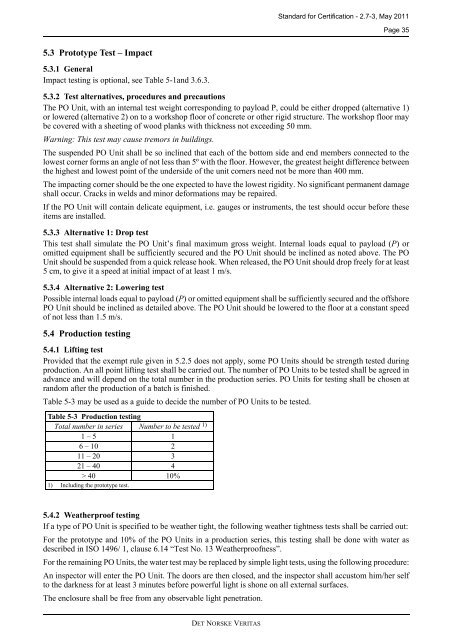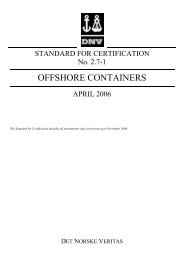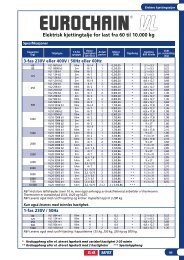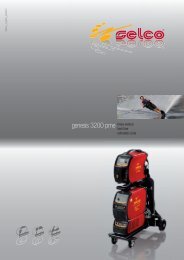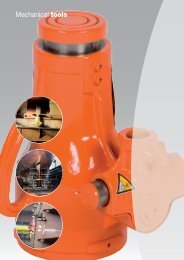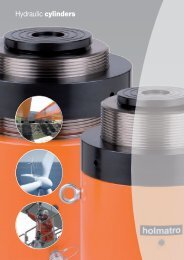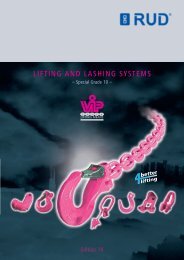atc/filer/DNV Standard 2-7-3 May 2011.pdf
atc/filer/DNV Standard 2-7-3 May 2011.pdf
atc/filer/DNV Standard 2-7-3 May 2011.pdf
Create successful ePaper yourself
Turn your PDF publications into a flip-book with our unique Google optimized e-Paper software.
<strong>Standard</strong> for Certification - 2.7-3, <strong>May</strong> 2011Page 355.3 Prototype Test – Impact5.3.1 GeneralImpact testing is optional, see Table 5-1and 3.6.3.5.3.2 Test alternatives, procedures and precautionsThe PO Unit, with an internal test weight corresponding to payload P, could be either dropped (alternative 1)or lowered (alternative 2) on to a workshop floor of concrete or other rigid structure. The workshop floor maybe covered with a sheeting of wood planks with thickness not exceeding 50 mm.Warning: This test may cause tremors in buildings.The suspended PO Unit shall be so inclined that each of the bottom side and end members connected to thelowest corner forms an angle of not less than 5º with the floor. However, the greatest height difference betweenthe highest and lowest point of the underside of the unit corners need not be more than 400 mm.The impacting corner should be the one expected to have the lowest rigidity. No significant permanent damageshall occur. Cracks in welds and minor deformations may be repaired.If the PO Unit will contain delicate equipment, i.e. gauges or instruments, the test should occur before theseitems are installed.5.3.3 Alternative 1: Drop testThis test shall simulate the PO Unit’s final maximum gross weight. Internal loads equal to payload (P) oromitted equipment shall be sufficiently secured and the PO Unit should be inclined as noted above. The POUnit should be suspended from a quick release hook. When released, the PO Unit should drop freely for at least5 cm, to give it a speed at initial impact of at least 1 m/s.5.3.4 Alternative 2: Lowering testPossible internal loads equal to payload (P) or omitted equipment shall be sufficiently secured and the offshorePO Unit should be inclined as detailed above. The PO Unit should be lowered to the floor at a constant speedof not less than 1.5 m/s.5.4 Production testing5.4.1 Lifting testProvided that the exempt rule given in 5.2.5 does not apply, some PO Units should be strength tested duringproduction. An all point lifting test shall be carried out. The number of PO Units to be tested shall be agreed inadvance and will depend on the total number in the production series. PO Units for testing shall be chosen atrandom after the production of a b<strong>atc</strong>h is finished.Table 5-3 may be used as a guide to decide the number of PO Units to be tested.Table 5-3 Production testingTotal number in series Number to be tested 1)1 – 5 16 – 10 211 – 20 321 – 40 4> 40 10%1) Including the prototype test.5.4.2 Weatherproof testingIf a type of PO Unit is specified to be weather tight, the following weather tightness tests shall be carried out:For the prototype and 10% of the PO Units in a production series, this testing shall be done with water asdescribed in ISO 1496/ 1, clause 6.14 “Test No. 13 Weatherproofness”.For the remaining PO Units, the water test may be replaced by simple light tests, using the following procedure:An inspector will enter the PO Unit. The doors are then closed, and the inspector shall accustom him/her selfto the darkness for at least 3 minutes before powerful light is shone on all external surfaces.The enclosure shall be free from any observable light penetration.DET NORSKE VERITAS


